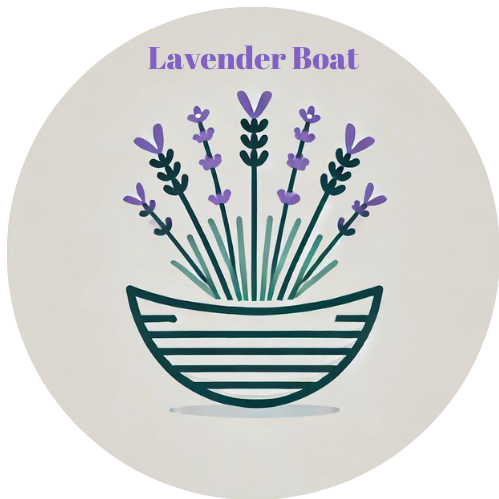Discover how lavender is a great Anti-inflammatory reducing inflammation naturally. Learn about its benefits, usage methods, and why it’s a great addition to your wellness routine.
Listen to the Guide:
Hello, Friends!
Have you ever wondered how to tackle inflammation naturally? Well, look no further because lavender might be just what you need. This fragrant flower isn’t just beautiful and soothing; it’s also packed with anti-inflammatory properties that can help ease various ailments. Today, we’ll explore how lavender can help reduce inflammation and improve overall well-being. So, let’s dive into the world of lavender and discover its amazing benefits!
Understanding Inflammation
Inflammation is a natural response by our body to protect us from harm. However, when it becomes chronic, it can lead to various health issues.
Brief Explanation of Inflammation and Its Common Causes
Inflammation is the body’s way of fighting off infections, injuries, and toxins. It’s an essential part of the healing process. However, factors like poor diet, lack of exercise, stress, and exposure to environmental toxins can lead to chronic inflammation. This ongoing inflammation can contribute to arthritis, heart disease, and certain cancers.
Impact of Chronic Inflammation on Health
Chronic inflammation can be quite debilitating. It can cause persistent pain, fatigue, and damage to healthy tissues. For example, I’ve had friends who suffer from arthritis, and the chronic inflammation in their joints often limits their mobility and causes constant discomfort.
Benefits of Lavender for Inflammation
Lavender is more than just a pretty flower; it has powerful properties that can help reduce inflammation.
Scientific Studies Supporting Lavender’s Anti-inflammatory Effects
Several studies have demonstrated lavender’s effectiveness in reducing inflammation. For instance, research published in the Journal of Ethnopharmacology found that lavender oil has significant anti-inflammatory and pain-relieving properties. Another study in the journal Evidence-Based Complementary and Alternative Medicine highlighted that lavender essential oil could reduce inflammation in the respiratory system.
Real-world Examples and Testimonials
Let’s hear from some real people who’ve experienced the benefits of lavender. My friend Lucy had chronic muscle inflammation from her intense workout routine. She started using lavender oil, and within a few weeks, she noticed a considerable reduction in muscle soreness and inflammation.
How to Use Lavender for Inflammation
There are several ways to incorporate lavender into your routine to help reduce inflammation.
1. Topical Application
Applying lavender oil directly to the skin can effectively reduce inflammation.
How to Apply Lavender Oil for Inflammation
Dilute a few drops of lavender essential oil with a carrier oil, like coconut or olive oil. Apply this mixture to the inflamed areas and gently massage it in. For example, I like to use this method on my sore muscles after a long day.
Benefits of Topical Application
Topical application allows the lavender oil to penetrate the skin directly, providing targeted relief. It can help reduce pain and swelling in specific areas.
2. Inhalation and Aromatherapy
Inhaling lavender oil is another effective way to reduce inflammation.
Using Lavender for Inhalation Therapy
Add a few drops of lavender oil to a diffuser and let the calming scent fill your room. Alternatively, add a few drops to a bowl of hot water, cover your head with a towel, and inhale the steam.
Benefits of Inhaling Lavender
Inhaling lavender can help reduce stress and anxiety, common contributors to chronic inflammation. It’s a quick and easy method that can be used anywhere.
3. Lavender Supplements and Teas
Lavender can also be consumed in supplement form or as a tea.
How to Use Lavender Supplements and Teas
Lavender supplements come in various forms, including capsules and tinctures. Lavender tea steeps dried lavender buds in hot water for 5-10 minutes. Both methods can help reduce inflammation from within.
Benefits and Safety Considerations
Lavender supplements and teas can provide systemic anti-inflammatory benefits. However, it’s important to follow the recommended dosage and consult a healthcare professional, especially if you have any pre-existing conditions or are taking other medications.
Customising Your Lavender Use
One of the best things about lavender is its versatility. Here are some ways to customise your lavender experience:
Combining Lavender with Other Anti-inflammatory Remedies
Lavender can be combined with other natural remedies for enhanced relief. For example, pairing lavender with turmeric or ginger, both known for their anti-inflammatory properties can create a powerful anti-inflammatory blend. Personally, I like to add a drop of lavender oil to my turmeric tea for a soothing and anti-inflammatory drink.
Creating Personalised Inflammation Relief Routines
Tailoring your lavender use to fit your lifestyle can make a big difference. For instance, you could start your day with a cup of lavender tea, use a lavender-infused lotion after a workout, and diffuse lavender oil in the evening to unwind. Consistency is key to seeing the best results.
Final Thoughts
Lavender is a wonderful, natural way to combat inflammation. Its anti-inflammatory properties can help reduce pain and swelling and improve overall well-being. Whether you choose to use essential oils, inhale its calming scent, or drink lavender tea, there are plenty of ways to incorporate lavender into your routine. Give it a try and see how it works for you!
I’d love to hear about your experiences with lavender for inflammation relief.
Have you tried any of these methods? Share your stories and tips on social media, and tag us.
Let’s inspire each other with our lavender journeys!
Did You Find This Guide Helpful?







